 Last additions - OSAKA 大阪府 Last additions - OSAKA 大阪府 |

Spectator stand (admission charged) at Can-Can intersection.Oct 08, 2009
|
|

Can-Can has spectator stands which charge admission, like 2,000 yen or 3,000 yen for 2 hours.Oct 08, 2009
|
|

This is another part of the parade route. They are approaching an intersection called Can-Can-ba. Oct 08, 2009
|
|

Riding on the danjiri float at the front are three of the danjiri group's important officers. Musicians (flute players, drummers, and bell ringers) also ride and perform on the danjiri.Oct 08, 2009
|
|

Oct 08, 2009
|
|

Oct 08, 2009
|
|

Oct 08, 2009
|
|

Oct 08, 2009
|
|

Men behind the danjiri pull shorter ropes attached to a steering pole. They steer the float by pulling the ropes when necessary. Oct 08, 2009
|
|

It must take a lot of skill and practice to balance yourself on a moving danjiri and dance on a sloping roof.Oct 08, 2009
|
|
|

One danjiri group wore these pointy caps. Maybe it was somebody's birthday??Oct 08, 2009
|
|

One float released balloons.Oct 08, 2009
|
|

Each danjiri has a man (sometimes two of them) dancing up and down on the roof while the danjiri moves. This is another dramatic aspect of the festival.Oct 08, 2009
|
|

Oct 08, 2009
|
|

Here they come in front of Kishiwada Station.Oct 08, 2009
|
|

It's quite a spectacle to see all these people running while pulling a rope. Amazing that no one tripped and fell down.Oct 08, 2009
|
|

Oct 08, 2009
|
|

Oct 08, 2009
|
|

Girls standing by to pull a danjiri float.Oct 08, 2009
|
|

Most pf the danjiri festival girls had braided scalps, sometimes in a flowery pattern.. Oct 08, 2009
|
|

They also pop party poppers.Oct 08, 2009
|
|

On Sat., after a lunch break, the danjiri again ran along the central streets from 1 pm to 5 pm. In front of the Kishiwada Ekimae-dori shopping arcade, they stopped and threw hand towels, etc., to the crowd.Oct 08, 2009
|
|

Streamers from part poppers blown by the wind get caught in the power lines. The best spot to take pictures here is occupied by a police/press grandstand seen on the right with the red and white curtain. Oct 08, 2009
|
|

The original danjiri floats were made in the 17th century by skilled craftsmen and carpenters in Kishiwada specializing in building shrines and temples.Oct 08, 2009
|
|

Oct 08, 2009
|
|

Some carvings depict famous battle or historical scenes.Oct 08, 2009
|
|

Look closely and you'll see numerous intricate wood carvings. Much of them are protected by a steel netting. The oldest danjiri still in use today was built in 1840.Oct 08, 2009
|
|

They run while pulling the danjiri floats while a man on the float's roof dances and prances with two fans. They pass by very quickly, unlike other float festivals. This is in front of Kishiwada Station.Oct 08, 2009
|
|

Rear view.Oct 08, 2009
|
|

There are 31 Kishiwada danjiri floats. Made of wood, they weigh about 4 tons. They consist of 300 parts, the most of any festival floats in Japan.Oct 08, 2009
|
|

Each float has two long white ropes pulled by many people, both men and women, dressed in happi coats, headband, and usually white pants.Oct 08, 2009
|
|

On Sat., the first day of the festival, they pulled the danjiri floats from 6:00 am to 7:30 am in their respective neighborhoods. Then from 9:30 am to 11 am, they pull the floats along the central streets, including Kishiwada Ekimae-dori shopping arcade.Oct 08, 2009
|
|

This T-intersection in front of Nankai Kishiwada Station is one good place to watch the floats go by. However, I recommend walking along the route to see other key places, especially at intersections where they turn.Oct 08, 2009
|
|

Sand bags protect the street corners from any collisions by the floats.Oct 08, 2009
|
|

They stop for a while, then run and turn left or right. The procession route is quite long, and you can follow it on the map they give out. Most spectators gather at several key points along the route.Oct 08, 2009
|
|

Hundreds of people pull and run with wooden danjiri floats around the central streets. This is the entrance of Kishiwada Ekimae-dori shopping arcade in front of the train station. These photos were taken on Sept. 19-20, 2009.Oct 08, 2009
|
|

After coming out of the Kishiwada Ekimae-dori shopping arcade, they face Nankai Kishiwada Station's west side. The procession route is mainly on the west side (ocean side) of the train tracks.Oct 08, 2009
|
|

The Kishiwada Danjiri Matsuri and Haruki Danjiri Matsuri festivals are held during the weekend before Respect for Aged Day (national holiday) which is the third Mon. in Sept. The Kishiwada Danjiri Matsuri is held near Nankai Kishiwada Station (pictured).Oct 08, 2009
|
|

May 15, 2009
|
|

May 15, 2009
|
|

May 15, 2009
|
|

May 15, 2009
|
|

May 15, 2009
|
|

Passengers on the Hanwa Line between Osaka and Wakayama will get a real visual treat when the cherries are in bloom.May 15, 2009
|
|

May 15, 2009
|
|

Stairs down from the station.May 15, 2009
|
|

May 15, 2009
|
|

May 15, 2009
|
|

Yamanaka-dani Station is lined with 1,000 cherry trees on both sides of the track. They bloom in early April.May 15, 2009
|
|

Site of a sekisho gate in Yamanaka.May 15, 2009
|
|

May 15, 2009
|
|

Wanpaku OkokuMay 15, 2009
|
|

Sculpture in Wanpaku Okoku, Hannan, Osaka.May 15, 2009
|
|

Yamanaka-dani Station 山中渓駅 on the Hanwa Line between Osaka and Wakayama.May 15, 2009
|
|

Wanpaku OkokuMay 15, 2009
|
|

Walking path along the cherry blossoms.May 15, 2009
|
|

Yamanaka-dani Station is one of the most beautiful train stations in spring. It is also the least busy station on the Hanwa Line.May 15, 2009
|
|

May 15, 2009
|
|

Amusement park called Wanpaku Okoku. わんぱく王国May 15, 2009
|
|

May 15, 2009
|
|

May 15, 2009
|
|

Yamanaka-dani posterMay 15, 2009
|
|

May 15, 2009
|
|

Hannan manhole, Osaka.May 15, 2009
|
|

May 15, 2009
|
|

May 15, 2009
|
|

Horrendous crowd gathers to watch the fireworks, the festival's climax. The festival ends at 10 pm when the procession returns to the shrine.Apr 06, 2007
|
|

The boat carrying the portable shrine housing the spirit of Sugawara Michizane. 御鳳輦奉安船Apr 06, 2007
|
|

Portable shrine 船渡御 玉御神輿奉安Apr 06, 2007
|
|

船渡御Apr 06, 2007
|
|

玉御神輿奉安Apr 06, 2007
|
|

Apr 06, 2007
|
|
|

Apr 06, 2007
|
|

This is the most important boat in the procession. It holds a ceremony called the Senjo-sai (船上祭) in the middle of the river to celebrate Sugawara Michizane's birthday. 御鳳輦奉安船Apr 06, 2007
|
|

Apr 06, 2007
|
|

Apr 06, 2007
|
|

Boat cornerApr 06, 2007
|
|

船渡御Apr 06, 2007
|
|

Apr 06, 2007
|
|

Apr 06, 2007
|
|

Apr 06, 2007
|
|

Apr 06, 2007
|
|

Tugboats pull these huge barges.Apr 06, 2007
|
|

To ride these boats, you have to be a member of a shrine parish or supporting group.Apr 06, 2007
|
|

Ningyo-bune 人形船Apr 06, 2007
|
|

船渡御Apr 06, 2007
|
|

The fire, fueled by LP gas, is on a corporate-sponsored boat, used for illumination. 大篝Apr 06, 2007
|
|

Most of the boats carry parishioners who eat bento on the boats while sometimes looking at photographers shooting them from a bridge overhead.Apr 06, 2007
|
|

The Boat Procession started at 7 pm on Okawa River. These boats are called Dondoko. どんどこ船 大川 船渡御Apr 06, 2007
|
|

The boats are numerous. About 100 of them go up and down the river.Apr 06, 2007
|
|

Apr 06, 2007
|
|

The boats are large barges.Apr 06, 2007
|
|

By 6 pm, shrine parishioners started boarding boats near Tenjin-bashi Bridge, the starting point of the Boat Procession. These are supporter's boats.Apr 06, 2007
|
|
|

Okawa River 大川Apr 06, 2007
|
|

Crowded walking path along Okawa River. Most people view the festival from the riverside.Apr 06, 2007
|
|

A large crane is used to carry the portable shrines onto the boats.Apr 06, 2007
|
|

The Boat Procession (Funa-togyo) is the Tenjin Matsuri festival's main event.Apr 06, 2007
|
|

Crowd near Tenjin-bashi Bridge.Apr 06, 2007
|
|

Apr 06, 2007
|
|

These boats will carry portable shrines.Apr 06, 2007
|
|

Portable shrine housing the spirit of Sugawara Michizane. This is the most important thing in the procession. 御鳳輦Apr 06, 2007
|
|

Apr 06, 2007
|
|

Apr 06, 2007
|
|

Apr 06, 2007
|
|

Apr 06, 2007
|
|

Apr 06, 2007
|
|

Apr 06, 2007
|
|

Apr 06, 2007
|
|

Mother and twins in yukataApr 06, 2007
|
|

御羽車Apr 06, 2007
|
|

Shrine priestApr 06, 2007
|
|

Portable shrine 御羽車Apr 06, 2007
|
|

牛曳童児Apr 06, 2007
|
|

Apr 06, 2007
|
|

Chigo childApr 06, 2007
|
|

Apr 06, 2007
|
|

Apr 06, 2007
|
|

Apr 06, 2007
|
|

Apr 06, 2007
|
|

Apr 06, 2007
|
|

Hanagasa umbrella dancers 花傘Apr 06, 2007
|
|
|
|

Hanagasa umbrella dancers, Tenjin Matsuri, Osaka 花傘Apr 06, 2007
|
|

Apr 06, 2007
|
|

Lion danceApr 06, 2007
|
|

花傘Apr 06, 2007
|
|

Hanagasa dancers 花傘Apr 06, 2007
|
|

Danjiri float 地車Apr 06, 2007
|
|

Shishimai lion danceApr 06, 2007
|
|

Danjiri float 地車Apr 06, 2007
|
|

Apr 06, 2007
|
|

Apr 06, 2007
|
|
|

About 3,000 people are in the procession which follows a 4 km route from the shrine to a boat landing near Tenjin-bashi Bridge on the Okawa River. 陸渡御Apr 06, 2007
|
|

Sarutahiko on horseback 猿田彦Apr 06, 2007
|
|

Taiko drummers at the shrine's Otorii gate. 催太鼓Apr 06, 2007
|
|

The Land Procession is one of the festival's two main events. It starts with a group of taiko drummers.Apr 06, 2007
|
|

Crowd at Osaka Tenmangu Shrine, the organizer of the Tenjin Festival and starting point of the festival's Land Procession called "Riku-togyo." 大阪天満宮One of Japan's Big Three Festivals (besides Kyoto's Gion Matsuri and Tokyo's Kanda Matsuri) is also Osaka's biggest summer festival held on July 24-25. These photos were taken on July 25, 2004. The festival has a procession starting from Tenmangu Shrine in the afternoon and a water procession on the river in the evening. Apr 06, 2007
|
|

Spectators wait near Tenmangu Shrine's torii for the Land Procession (Riku-togyo) to start at 4 pm on July 25, the festival's 2nd day. The shrine is near Minami-morimachi Station on the Tanimachi subway line. 陸渡御Apr 06, 2007
|
|

Jan 16, 2007
|
|

People patting a lucky mirror?Jan 16, 2007
|
|

Jan 16, 2007
|
|

The shrine is surrounded by Ebisu street stalls.Jan 16, 2007
|
|

Never-ending sales pitch on Toka Ebisu Day. All these good-looking girls make you wanna buy something.Jan 16, 2007
|
|

Jan 16, 2007
|
|

Jan 16, 2007
|
|

Jan 16, 2007
|
|

Jan 16, 2007
|
|

Jan 16, 2007
|
|

Another Shinsaibashi Top LadyJan 16, 2007
|
|

Shinsaibashi Top LadyJan 16, 2007
|
|

Jan 16, 2007
|
|

Jan 16, 2007
|
|

Miss Ebisu-bashiJan 16, 2007
|
|

Cart for Miss Ebisu-bashiJan 16, 2007
|
|

Miss Ebisu-bashi, Toka Ebisu, Imamiya Ebisu Jinja, OsakaJan 16, 2007
|
|

Shinsaibashi Top Lady cartJan 16, 2007
|
|

Cart for the Lucky MaidenJan 16, 2007
|
|

Jan 16, 2007
|
|

Slim-looking EbisuJan 16, 2007
|
|

Fuku-musume Lucky MaidenJan 16, 2007
|
|

Geisha on a palanquinJan 16, 2007
|
|

Geisha on a palanquin, Toka Ebisu, Imamiya Ebisu Shrine, OsakaJan 16, 2007
|
|

Jan 16, 2007
|
|

Jan 16, 2007
|
|

Shinsaibashi Top LadyJan 16, 2007
|
|

Jan 16, 2007
|
|

Ebisu on a palanquin.Jan 16, 2007
|
|

Start of the procession's return trip from the shrine.とんぼりリバーウォーク→大和屋→道頓堀東映→B1角座(10:00)→松竹座→戎橋橋詰→千日前国際劇場→吉本会館→今宮戎神社(12:10頃)→なんばCITY→高島屋→大丸→大和屋Jan 16, 2007
|
|

GeishaJan 16, 2007
|
|

GeishaJan 16, 2007
|
|

Fuku-musume or Lucky MaidensJan 16, 2007
|
|

Miss Ebisu-bashi Runner-upJan 16, 2007
|
|

Jan 16, 2007
|
|

Miss Ebisu-bashi Runner-upJan 16, 2007
|
|

Miss Ebisu-bashiJan 16, 2007
|
|

The Fuku-musume or Lucky Maidens are all nice-looking.Jan 16, 2007
|
|

Jan 16, 2007
|
|

Jan 16, 2007
|
|

Kimono-clad beauties, winners of some Miss contest.Jan 16, 2007
|
|

Fuku-musume or Lucky MaidenJan 16, 2007
|
|

Fuku-musume or Lucky MaidensJan 16, 2007
|
|
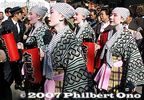
Jan 16, 2007
|
|

Geisha on palanquin.Jan 16, 2007
|
|

The procession includes geisha and other celebrities.Jan 16, 2007
|
|

Even a bunraku puppet walks in the parade.Jan 16, 2007
|
|
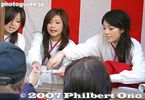
Jan 16, 2007
|
|

Omikuji fortune paper strips for sale at 200 yen.Jan 16, 2007
|
|

Good Luck Palanquin procession on Jan. 10. They are entering the shrine's East Gate. 宝恵駕籠Jan 16, 2007
|
|

Omikuji fortune paper stripsJan 16, 2007
|
|

Even gaijin shrine maidens decorate bamboo branches or rakes. Toka Ebisu, Imamiya Ebisu Shrine, OsakaJan 16, 2007
|
|

Fully-loaded "lucky rake."Jan 16, 2007
|
|

More stalls behind the shrine.Jan 16, 2007
|
|

Sacred dance performed at cost.Jan 16, 2007
|
|

Good-looking shrine maidens decorate bamboo branches or rakes.Jan 16, 2007
|
|

Shrine maidens decorate bamboo branches or rakes.Jan 16, 2007
|
|

2007 is the Year of the Boar, decoration created by over 500 students at a local elementary and junior high school.Jan 16, 2007
|
|

Even gaijin shrine maidens decorate bamboo branches or rakes. Toka Ebisu, Imamiya Ebisu Shrine, OsakaJan 16, 2007
|
|

Toka Ebisu, Imamiya Ebisu Shrine, OsakaJan 16, 2007
|
|

Higashi-mon east gateJan 16, 2007
|
|

Shrine maidens decorate bamboo branches or rakes.Jan 16, 2007
|
|

Higashi-mon east gateJan 16, 2007
|
|

People line up to decorate their free bamboo branches with various lucky decorations.Jan 16, 2007
|
|

Hauling away the old New Year's decorations.Jan 16, 2007
|
|

Shrine maidens happily sell and attach lucky decorations on the branches.Jan 16, 2007
|
|

New Year's decorations trashed at the shrine to be burned.Jan 16, 2007
|
|

The shrine rakes in the money on its most important day of the year, Jan. 10.Jan 16, 2007
|
|

Empty branches waiting for all the trimmings (at a price).Jan 16, 2007
|
|

Money pitJan 16, 2007
|
|

Who says money can't buy happiness?Jan 16, 2007
|
|

Here you go...Jan 16, 2007
|
|

Replenishing the supply of bamboo branches.Jan 16, 2007
|
|

Jan 16, 2007
|
|

Giving out free bamboo branches under the giant umbrella.Jan 16, 2007
|
|

The small bamboo branches festoon the huge crowd on Jan. 10.Jan 16, 2007
|
|

Imamiya Ebisu Shrine, OsakaJan 16, 2007
|
|

Jan 16, 2007
|
|

A giant umbrella serves as the roof.Jan 16, 2007
|
|

Jan 16, 2007
|
|

Torii and entrance to Imamiya Ebisu ShrineJan 16, 2007
|
|

Imamiya Ebisu ShrineJan 16, 2007
|
|

Jan 16, 2007
|
|

Jan 16, 2007
|
|

Path near the shrine is filled with street stalls selling Ebisu decorations and charms.Jan 16, 2007
|
|

Imamiya Ebisu Shrine is dedicated to Ebisu, one of the Seven Gods of Good Fortune, representing business prosperity. On Jan. 9-11 (centering on the 10th), the shrine holds one of Japan's largest Toka Ebisu festivals to pray for good business. The festival is perhaps Japan's most commercial festival where souvenirs and trinkets for business prosperity are sold. Photo: The road from the subway station to the shrine is decorated.Jan 16, 2007
|
|

Ebisu decorationsJan 16, 2007
|
|

National Bunraku Puppet Theater MuseumNov 24, 2006
|
|

Inside National Bunraku Puppet Theater. Photography is not allowed during the plays. Bunraku puppets can perform feats which human actors cannot. This can make it interesting. Bring binoculars though.Nov 24, 2006
|
|

National Bunraku Puppet Theater at night.Nov 24, 2006
|
|

National Bunraku Puppet Theater. Bunraku is over 370 years old, even older than kabuki. Nov 24, 2006
|
|
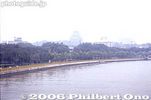
View of castle from NakanoshimaJan 21, 2006
|
|
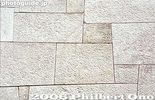
Stone wall patternJan 21, 2006
|
|

Castle towerJan 21, 2006
|
|

Castle towerThis picture was taken before the 1995-97 renovation.Jan 21, 2006
|
|
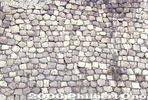
Stone wall patternJan 21, 2006
|
|
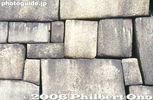
Stone wall patternJan 21, 2006
|
|

MoatJan 21, 2006
|
|
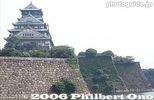
Castle towerJan 21, 2006
|
|

Sengan Turret near Otemon GateOne of the castle's oldest remaining buildings built in 1620. Underwent major restoration in 1961. Overlooking the outer moat.
千貴櫓Jan 21, 2006
|
|

Castle towerJan 21, 2006
|
|

One of the largest stonesJan 21, 2006
|
|

The castle's fourth and fifth largest stones.Brought by the Tokugawa during construction. Next to Tamon Yagura Turret and Daimon Gate.Jan 21, 2006
|
|

Outer moat and Sengan TurretJan 21, 2006
|
|

Otemon Gate in the distanceJan 21, 2006
|
|

Jan 21, 2006
|
|

Kadomatsu New Year's decorationLeft side of Sakura-mon Gate.Jan 21, 2006
|
|

Near Otemon GateJan 21, 2006
|
|

Near Otemon GateJan 21, 2006
|
|

Otemon Gate大手門Jan 21, 2006
|
|
| 794 files on 4 page(s) |
 |
3 |
|